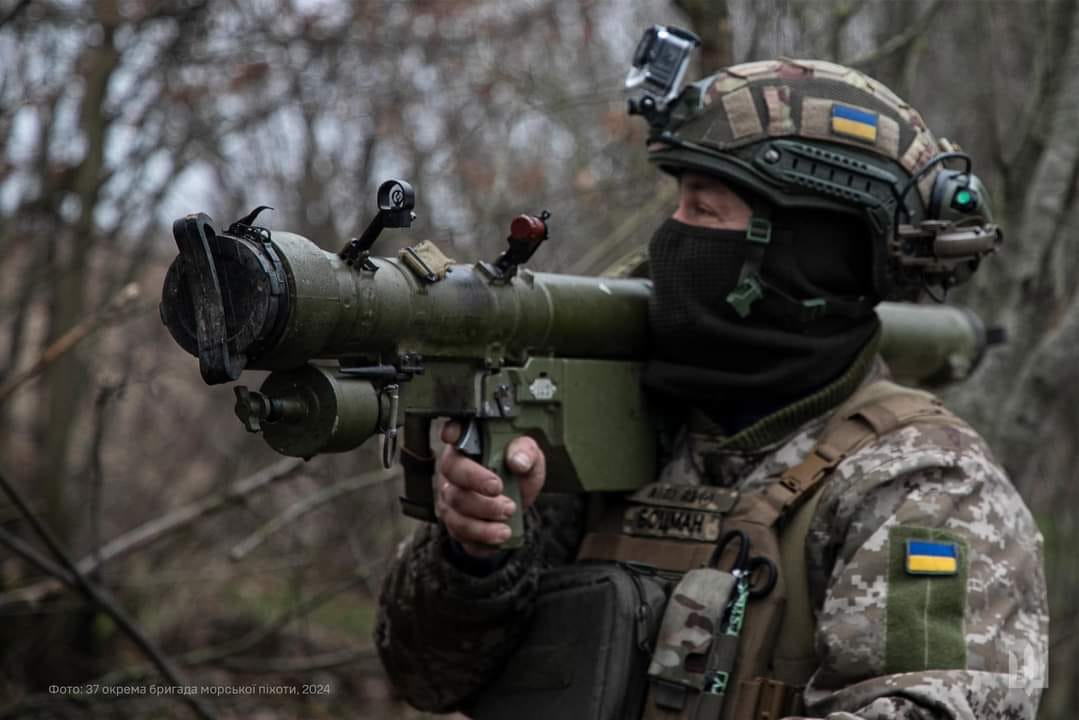Two years ago, Ukraine was attacked from nine directions in the north, east, and south by Russia, which became the first country to wage a war in Europe in the 21st century.
On 24 February, Ukraine and its supporters mark a day when the Kremlin launched an invasion aiming to destroy the country's statehood and "russificate" Ukrainians.
Russia planned to seize Ukraine quickly but failed. However, its goals have remained the same - to build its "empire" and break the world's security system based on international law.
Despite relentless missile attacks, fierce battles, and disruptions of weapons supply, Ukraine has liberated more than 50% of its territory initially occupied by Russia since 2022 and destroyed 20% of Russia's Black Sea Fleet over the past four months
Two years into the full-scale war in Ukraine, there is no reason to believe it will come to an end soon. Neither Ukraine nor Russia nor key allies on either side see grounds for a peaceful resolution.
Marking the second anniversary of Russia's assault on democracy, Euromaidan Press responds to five questions asked by our readers, shedding light on the current situation and offering insights into potential future developments.
Why has Ukraine not mobilized?
Ukraine has mobilized and is using its available military forces. Shortly before and soon after the Russian invasion in February 2022, Ukraine had implemented full mobilization orders to summon reservists and expand its armed forces. However, mobilizing, training, and deploying new soldiers takes time.
Ukraine eliminated conscription in 2013 but then, due to the Russo-Ukrainian War, was reinstated in 2014. Now, many of those fighting are soldiers or veterans who served after conscription ended.
Ukraine is using a mix of active duty soldiers, reserves, territorial defense forces, and volunteers ranging in age and experience. Those forces include younger and older individuals fighting to defend their country. Experienced veterans provide valuable leadership. However, there are many draftees in their 40s.
Ukraine did not give official comments on its mobilization age policies. The chief of the British Army, Gen. Patrick Sanders, believes that Ukraine "has taken a conscious decision to mobilize more mature people for conflict” in order to protect "their young men and women for the sake of the future of the economy.”
Do Ukrainian soldiers know how grateful people worldwide are for their sacrifice in keeping the Russians at bay?
There have been widespread shows of support and gratitude for Ukrainian troops. Foreign leaders like Boris Johnson
and numerous officials have made solidarity trips to Kyiv to meet President Volodymyr Zelenskyy and praise Ukraine’s defense efforts. Such visits likely convey global appreciation.
Ukrainian forces receive letters, gifts, and donations from people around the world thanking them and urging them to keep fighting. For instance, Estonian volunteers sent military vehicles and drones worth €500,000 to Ukrainian troops this January, as per Rubryka.
President Zelenskyy and the Ukrainian government have explicitly recognized the bravery and sacrifice of their troops in defending freedom, according to the President's Office. Zelenskyy tells soldiers they are protecting not just Ukraine but the world, likely indicating global support.
Can Ukraine win the war if it manages to get air control with F-16s?
Air superiority is just one part of Ukraine's path to victory; it alone cannot win the war. Ukraine needs a continuous supply of artillery ammunition and systems to fight off Russian attacks and support its advancing troops. It also needs air defense systems and munitions to protect its troops, command centers, and military facilities from Russian missile and drone attacks. Additionally, Ukraine needs long-range strike capabilities to target Russian military logistics and reserves behind the front lines and disrupt supplies to Russian frontline units. Training new troops is also necessary to build reserves and replenish depleted units.
The long delays in US military aid have effectively weakened Ukraine's assault capabilities.
The Ukrainian Air Force views F-16s as versatile aircraft, not just for achieving some air superiority near the front lines. While F-16s can't dominate the skies over all of Ukraine due to Russia's strong air force and defenses, they can push Russian bombers further back to prevent bombings on Ukraine's frontline troops and nearby cities. F-16s can support ground troops, act as a final layer in air defenses by intercepting missiles and drones, and conduct long-range strikes on Russian logistics, command centers, reserves, and storage facilities.
Since Türkiye does not allow warships through the Bosporus, how does Russia get its warships into the Black Sea?
On 28 February 2022, four days into the full-scale invasion, Türkiye invoked the 1936 Montreux Convention to close off the straits to warships. Currently, Russia is unable to send additional warships to the Black Sea via the Bosphorus Strait because Türkiye, adhering to the Convention, has
restricted the passage of both Ukrainian and Russian warships if those are not registered to Black Sea home bases.
Shortly before the invasion, while the Straits were still open, Russia reinforced its Black Sea several Russian ships sailed into the Black Sea: on 8 February, three amphibious landing ships transited Bosporus, the Georgy Pobedonosets, the Olenegorsky Gornyak, and the Pyotr Morgunov. On 12 February, the Black Sea Fleet’s Rostov-na-Donu submarine entered the Dardanelles. In total, at least six ships from Russia’s Baltic and Northern fleets entered the Black Sea shortly before the invasion.
Earlier, in 2021, Russia transferred at least 15 vessels from the Caspian Sea to the Black Sea via the Volga-Don Canal.
Will the war end in 2024?
There is no indication that the war in Ukraine is nearing its end. Kyiv remains steadfast in its belief that its internationally recognized borders must be restored and all occupied territories liberated. Meanwhile, Moscow continues to deny that Ukraine ever had real statehood and that Russian forces will persist until their objectives are achieved.
The unchanging nature of Putin's goals is evident in his recent interview with Tucker Carlson, where he insists that Ukraine and Russia are one people and alleges that Ukraine is now under the control of Nazis.
During the conversation, the Russian president also justified the actions of the German Nazis, stating that Poland provoked Hitler into starting World War II, in a statement that sparked strong criticism from Polish politicians.
With neither side showing signs of relenting, analysts predict a prolonged conflict.
Ukraine plans to navigate the current deadlock on the battlefield by using modern Western weapons and push Russian forces out of its territory. However, experts say a withdrawal is unlikely to lead to the signing of peace agreements, as seen in the case of Russia's retreat from territories like Kherson and Kyiv oblasts.
Despite the withdrawal, Russia retains the capability to launch missile and drone attacks on Ukraine, which are expected to be intercepted over 80% of the time by bolstered Ukrainian air defenses unless Ukraine becomes an official NATO member. A modest economic recovery and financial assistance from the EU are anticipated to support Ukraine's military efforts in this protracted struggle.
Five realistic scenarios of war in Ukraine in 2024: GLOBSEC report
Read more:
- Ukraine expands movement against Russian cultural imperialism
- Frontline report: Destruction of scarce A-50 to offer relief from Russian bombardment
- Russian World: the heresy driving Putin’s war
- Closing loopholes: the key to crippling Russia’s oil and gas profits
- Two years of all-out war: weapons of Ukrainian victory





